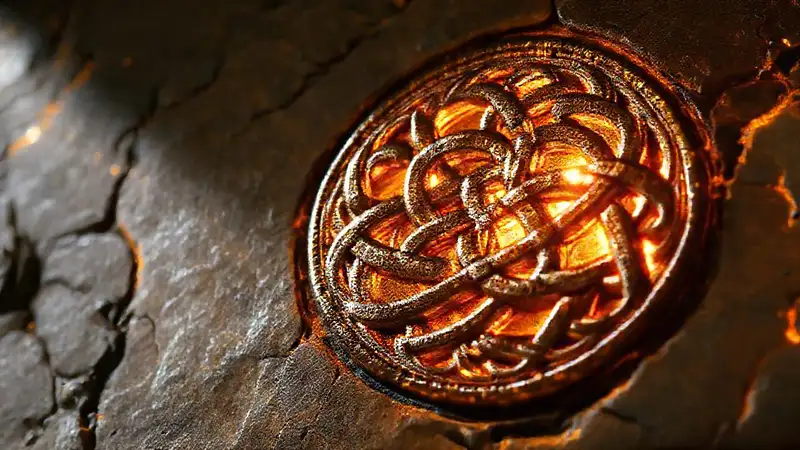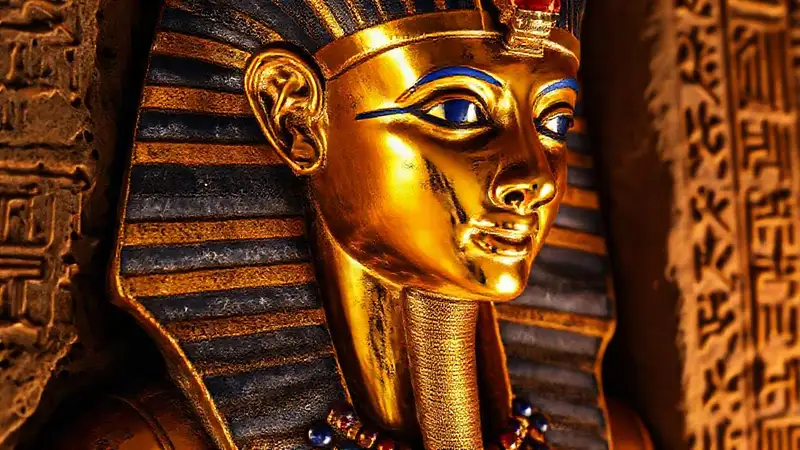Ancient Egypt, a civilization that flourished for over three millennia, continues to captivate our imaginations with its monumental architecture, complex religious beliefs, and sophisticated culture. At the heart of this enduring fascination lies the image of the pharaohs, powerful rulers considered divine, and the imposing pyramids, constructed as elaborate tombs. However, beyond these grand structures, a vibrant artistic tradition thrived – a tradition deeply intertwined with the use of jewelry and adornments, reflecting social status, religious beliefs, and personal identity. This exploration delves into the remarkable characteristics of Egyptian jewelry and their significance in a society obsessed with eternity.
The use of precious materials and intricate craftsmanship was central to Egyptian adornment. Far from simply being decorative, jewelry and objects of adornment were imbued with deep symbolic meaning, intended to protect the wearer in life and ensure their safe passage into the afterlife. The meticulous detail, the quality of the materials, and the sheer abundance of jewelry found in tombs attest to the immense importance placed upon these items, revealing a powerful connection between material wealth, spiritual wellbeing, and the concept of immortality. Understanding these nuances is vital for grasping the full scope of Egyptian culture.
Materials and Gemstones
The Egyptians possessed a remarkable understanding of geology and mining, allowing them to source a wide array of materials. Gold was the most prized metal, associated with the sun god Ra and representing immortality and divine power. It was frequently used in elaborate necklaces, bracelets, and headdresses, particularly for royalty and high-ranking officials. Silver, though less valued than gold, was used extensively in combination with it, often providing a contrasting color. Alongside metals, semiprecious gemstones played a crucial role. Lapis lazuli, imported from Afghanistan, was a staple for inlays and beads due to its deep blue color, symbolizing the heavens and protection. Carnelian, a vibrant red stone, represented vitality and power, and turquoise, associated with fertility and rebirth, was incredibly popular.
The Egyptians weren't limited to locally sourced materials. They embarked on perilous expeditions to obtain exotic stones like emeralds from Africa and amethyst from Persia. These far-flung acquisitions underscored the wealth and power of the kingdom and highlighted the perceived importance of these treasures. The production process itself was also incredibly detailed. Metalworking involved complex hammering, casting, and soldering techniques. Gemstones were often cut and polished with astonishing precision, demonstrating a highly developed level of technical skill. This dedication to quality ensured that Egyptian jewelry remained remarkably well-preserved over thousands of years. The importance of trade cannot be overstated.
Forms and Styles
Egyptian jewelry wasn’t simply about applying a gem to a piece of metal; it involved sophisticated design and construction. Necklaces, often referred to as ‘wadj’, were the most common form of jewelry, and could range from simple chains to elaborate torques adorned with intricate pendants. Bracelets, frequently crafted from gold and embellished with carnelian or faience, were worn on the wrists and ankles. Rings, often fashioned in the shape of scarabs or other symbolic motifs, were particularly important, representing rebirth and protection. A significant development was the use of ushebti – small funerary figurines often made of faience, adorned with jewelry and intended to serve the deceased in the afterlife, performing tasks on their behalf.
Distinct stylistic periods characterized Egyptian jewelry. The Old Kingdom saw a preference for heavier, bolder designs, emphasizing geometric shapes and bold colors. The Middle Kingdom witnessed a move towards more delicate and naturalistic forms, incorporating floral motifs and representations of animals. The New Kingdom, marked by the height of Egyptian power, saw a resurgence of opulent designs, reflecting the wealth and grandeur of the era. Understanding these stylistic shifts offers valuable insights into the changing aesthetics and beliefs of ancient Egyptian society.
Symbolism and Meaning

Every element of Egyptian jewelry was laden with symbolism. The scarab beetle, representing rebirth and regeneration, was a ubiquitous motif. The Eye of Horus, a symbol of protection, royal power, and good health, was frequently featured in pendants and amulets. The ankh, representing life, was a potent symbol of immortality. The lotus flower, symbolizing creation and the rising sun, held particular significance during religious ceremonies. These weren’t just random decorations – they were carefully chosen to convey messages of power, protection, and eternal life.
The color of the materials also carried significant meaning. Red symbolized vitality and power, blue represented the heavens and protection, green represented fertility and regeneration, and white symbolized purity and the afterlife. Even the shape of the objects held symbolic weight; a circular form represented eternity, while a teardrop shape signified mourning and grief. The very act of wearing jewelry was considered a form of religious practice, an invocation of the gods and a guarantee of continued blessings.
Adornments Beyond Jewelry
While jewelry is often the most recognizable aspect of Egyptian adornment, the Egyptians utilized a wider range of materials and techniques. Cosmetics played a crucial role in personal appearance, with both men and women using kohl eyeliner, eyeshadow, and rouge. False beards and headdresses were common among royalty, emphasizing their status and divine connection. Hair was meticulously styled and adorned with beads and ribbons, and elaborate wigs were worn for formal occasions. Finger and toe rings, often made of gold or silver, were also popular, particularly among the elite. These diverse forms of adornment reflected a deep concern with appearance and projecting an image of power and beauty.
Conclusion
In conclusion, the jewelry and adornments of ancient Egypt represent far more than simple decorative objects. They were potent symbols of status, religious belief, and the desire for immortality, meticulously crafted from precious materials and imbued with deep symbolic meaning. From the elaborate gold necklaces of the pharaohs to the simple amulets worn by commoners, these objects reveal a sophisticated culture obsessed with beauty, power, and the promise of an eternal afterlife. The study of Egyptian jewelry offers a unique window into the minds and beliefs of this remarkable civilization, highlighting the inextricable link between art, religion, and the concept of enduring legacy.
 Describe the significance of Celtic knotwork designs
Describe the significance of Celtic knotwork designs How did druids utilize herbal remedies and potions
How did druids utilize herbal remedies and potions How did the discovery of Deir el-Medina alter archaeological insights
How did the discovery of Deir el-Medina alter archaeological insights What protective amulets were placed within wrappings
What protective amulets were placed within wrappings What evidence suggests the tombs were deliberately hidden
What evidence suggests the tombs were deliberately hidden Describe the initial steps after death for mummies
Describe the initial steps after death for mummies What ongoing projects are furthering pyramid research
What ongoing projects are furthering pyramid research Describe the elaborate decorations used in Aztec ceremonies
Describe the elaborate decorations used in Aztec ceremonies
Deja una respuesta